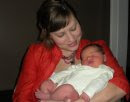

Last week I lead a discussion called "Living the Questions" where we talked about Faith as a Journey, moving us from certainty to the complexities and peace of faith. Our next discussion is Sunday April 18th at the main campus of Our Saviour's Lutheran Church. As we discussed faith as a journey I briefly brought up the spiritual tool of labyrinths. I find it easier to pray while my feet are moving and particularly like to walk the outdoor labyrinths at Marionjoy rehabilitation center off of Roosevelt Road in Wheaton as well as at the Theosophical Center off of Main Street in Wheaton. There's even one on the Riverwalk in downtown Naperville. There's a website where you can buy labyrinths and although I do not endorse them, they do have some helpful pictures and information, some of which I have enclosed. I would be happy to talk to anyone about walking a labyrinth. Cheers to life and faith as a journey!
What Is A Labyrinth?
Labyrinths are ancient human symbols known to go back at least 3500 years and probably much older. They appeared on most inhabited continents in prehistory, with examples known from North & South America, Africa, Asia and across Europe from the Mediterranean to Scandinavia. The labyrinth symbol was incorporated into the floors of the great Gothic pilgrimage cathedrals of France in the twelfth & thirteenth centuries. The most famous extant design is the example in the nave floor of the Cathedral of Notre Dame de Chartres outside of Paris. This labyrinth was built of honey colored limestone with marble lines around the year 1200 and is now over 800 years old.
Why Do We Walk Labyrinths?
A labyrinth is not a maze, but a walking meditation device with a single winding path from the edge to the center. There are no tricks, choices or dead ends in a labyrinth walk. The same path is used to return to the outside. Combining a number of even older symbols, including the circle, spiral and meander, the labyrinth represents the journey inward to our own true selves and back out into the everyday world.
Walking a labyrinth is a right brain activity (creative, intuitive, imaginative), and can induce or enhance a contemplative or meditative state of mind. It is a tool which can clear the mind, calm our anxieties during periods of transition and stress, guide healing, deepen self-knowledge, enhance creativity, allow for reconciliation, restore feelings of belonging to a community, and lead to personal and spiritual growth.
For many walkers the labyrinth becomes a metaphor for the journey of life: although full of twists and turns, each of us is on a single path through his or her life, and yet each person's journey is a separate and distinct qualitative experience. In walking labyrinths, modern seekers are emulating and recapturing the pilgrimage tradition of many ancient faiths.


